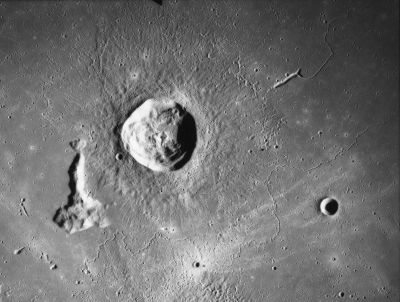Rima Diophantus
Contents
Rima Diophantus
|
Lat: 29.0°N, Long: 33.0°W, Length: 150 km, Depth: km, Rükl: 19 |
Images
LPOD Photo Gallery Lunar Orbiter Images Apollo Images
Maps
(LAC zone 39B2) LAC map Geologic map LM map LTO map
Description
The Diophantis Rille passes between the craters Delisle (shown above) and Diophantus. Rükl gives a length of 140 km and the rille is very narrow. It is a highly sinuous rille with abrupt (more than 90°) turns, and appears to start at a small double crater near the bottom left. The large elongated collapse at top right is the beginning of the unrelated Delisle Rille. - tychocrater Jun 30, 2007
Description: Wikipedia
Additional Information
Lunar trivia: The rilles mentioned under Description were not named in either Blagg and Müller or in the System of Lunar Craters. Those examining LTO-39B2 will notice that when that map was being prepared for NASA in early 1974, Rima Diophantus was given the provisional name "Rima Brahms", while what we now call Rima Delisle was labeled "Rima Verdi". These might well be the official names today, but name changes have to be approved by a vote of IAU General Assembly (held every three years) and before the next meeting of that body, the IAU's Working Group on Planetary Systems Nomenclature (WGPSN) passed a resolution overturning a previous resolution that had encouraged the use of such non-scientist names in situations where a lettered name would have been used in the past. So the provisional names shown on the LTO were never adopted, and at the 1985 General Assembly the present names were finally substituted for them. - Jim Mosher
Nomenclature
Named from nearby crater Diophantus.
Number 114 in Debra Hurwitz's Atlas and Catalog of Sinuous Rilles.
LPOD Articles
Bibliography
APOLLO OVER THE MOON; A VIEW FROM ORBIT, Chapter 6: Rimae (Part 2: Sinuous Rimae, continued), Figure 199.
